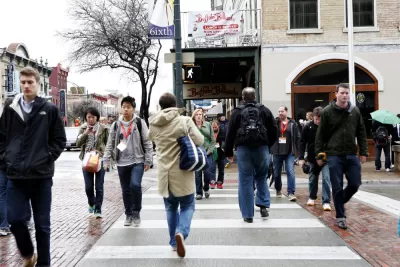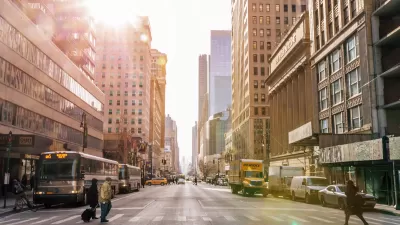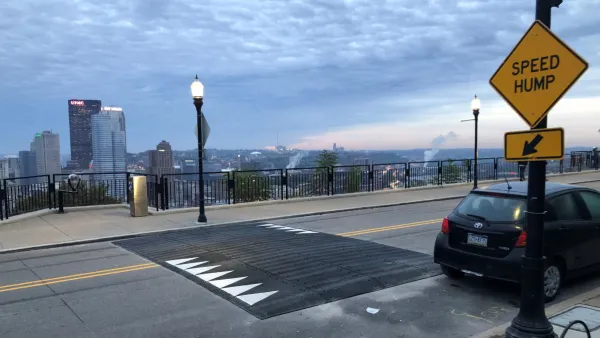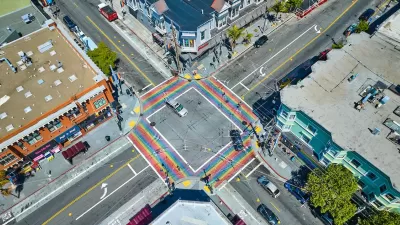Giving pedestrians a head start at crosswalks is a simple fix that could save lots of lives. New York City has already seen a significant reduction in fatalities and injuries.

Leading pedestrian intervals, or LPIs, are traffic signals that give pedestrians a few seconds of walking time before cars enter the intersection. Laura Bliss covers how they've been linked to lower fatalities where they're installed.
"Given even a few seconds of priority," Bliss writes, "most [pedestrians] wind up at least halfway into the crosswalk—where they're plenty visible to drivers—before cars are allowed to go straight or make turns (including the ultra-dangerous left)."
Cities like San Francisco, Los Angeles, and Seattle have all been experimenting with LPIs as part of their Vision Zero platforms. But as we've seen, New York City has achieved the best outcomes so far. NYC boasts 2,483 LPIs, and "a 2016 study of 104 intersections by the NYC Department of Transportation found that pedestrian and bike fatalities and severe injuries declined by nearly 40 percent at locations where LPIs have been installed."
Among Vision Zero enhancements, LPIs stand out for their comparatively low costs. According to a New York City DOT spokesperson, Bliss reports, the average cost per crosswalk is just $1,200.
FULL STORY: The Incredibly Cheap Street Fix That Saves Lives

Maui's Vacation Rental Debate Turns Ugly
Verbal attacks, misinformation campaigns and fistfights plague a high-stakes debate to convert thousands of vacation rentals into long-term housing.

Planetizen Federal Action Tracker
A weekly monitor of how Trump’s orders and actions are impacting planners and planning in America.

In Urban Planning, AI Prompting Could be the New Design Thinking
Creativity has long been key to great urban design. What if we see AI as our new creative partner?

How Trump's HUD Budget Proposal Would Harm Homelessness Response
Experts say the change to the HUD budget would make it more difficult to identify people who are homeless and connect them with services, and to prevent homelessness.

The Vast Potential of the Right-of-Way
One writer argues that the space between two building faces is the most important element of the built environment.

Florida Seniors Face Rising Homelessness Risk
High housing costs are pushing more seniors, many of them on a fixed income, into homelessness.
Urban Design for Planners 1: Software Tools
This six-course series explores essential urban design concepts using open source software and equips planners with the tools they need to participate fully in the urban design process.
Planning for Universal Design
Learn the tools for implementing Universal Design in planning regulations.
Gallatin County Department of Planning & Community Development
Heyer Gruel & Associates PA
JM Goldson LLC
City of Camden Redevelopment Agency
City of Astoria
Transportation Research & Education Center (TREC) at Portland State University
Jefferson Parish Government
Camden Redevelopment Agency
City of Claremont





























